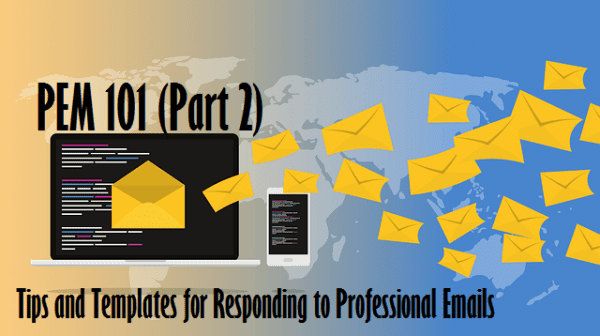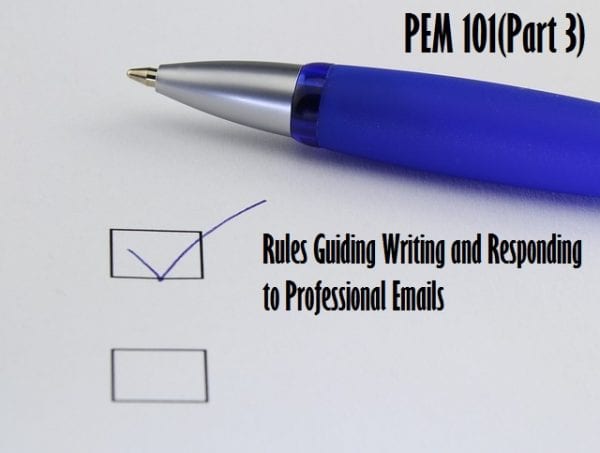Email marketing or correspondence, in general, can be tricky. While different from traditional marketing, it still requires you to be the salesperson. However, email marketing separates itself from traditional means of advertisement for one important reason – individual targeting.
Every email you write will be opened, read and experienced individually. People rarely experience emails with someone at their side. This means that you need to find ways to annunciate interaction and request answers in a different way. Let’s take a look at several tips and examples as to how you can write better emails and have the customers come back for more of what you have to offer.
-
Subject lines matter
The first contact someone will have with your email is through the subject line. The title of your email will often make or break a marketing campaign you are in. Make sure to write informative, professional titles for your email content if you want the customers to get back to you.
“Brand beauty products on offer – as used by professional fashion models and makeup artists”
Avoid using all-caps, exclamation marks, overly-exciting lingo and shady wording. These are all staples of spam content we are all accustomed to seeing in our spam folder – not at the top of the inbox page.
-
Call to action
The most obvious example of effective email marketing is the inclusion of CTA or a call to action. CTAs can take many forms but the point is to make people “take action” once they have read through your email. That action depends on what you are trying to accomplish.
“We are here to answer any questions you may have in regards to our products and services. Ask away!”
You can ask your reader to buy more of your products, join your subscription base or show up for a live demonstration. Calls to action ask people directly to “act”, which makes them a good choice for rousing up a response. Make sure that you have a clear goal in mind when creating your CTA and the rest will be up to readers.
-
Add an incentive
There is a reason as to why sales and discounts show up around us. We are wired to save money in every way we can – digital content included. Studies show that 3 billion people will use email services by the year 2020. Such a huge market is bound to provide you with a steady stream of customers that you can rely on. A great way to get customers to respond to your emails is to give them an incentive to do so.
“Any email response we receive in the next three days will receive a one-time discount coupon for our store!”
This can be anything from a discount coupon, a free sample or a trial period for an online service. The incentives you add should correspond with the wants and needs of your customers. Only then will you get the desired response and get them to answer your emails as soon as possible.
-
Address by name (at minimum)
You should always address your customers by name. The more access to information about whom they are, the better your response rate will be. People like it when someone cares about their day and what they are up to. A simple email with a greeting and their actual name can have a huge impact on your customer base as a whole. Make sure to take your time and create emails that are individualized to some extent.
“We value the trust and support we have received from you over the years, Melinda. That is why we have prepared an exclusive offer for you today!”
This can be tricky when dealing with international audiences since email marketing is a global advertisement method. In that case, you can take a look at some of the largest translation companies on the web and hire a localization expert to lend you a hand. Translation can (and should) be done in-house if there is a translator present. In the case of the opposite, it should be outsourced to professional writers with adequate skillsets.
-
Use your social proof
As humans, we are made to move in a crowd and do what other people do. This logic can easily be applied in email marketing through social proof. A social proof represents a numeric piece of data in regards to your previous customers. This can be anything from sales figures to the size of your subscription base.
“Over the past decade, we have satisfied the needs of over 1,000,000 customers around the globe.”
The number in question is often enough to make people take action and respond to an email query. Keep in mind that you should always use true statements and information in regards to your company. Using false information can cause you to lose the trust of everyone in your customer base and end your marketing streak in an instant.
-
Short and direct information
People rarely read through long emails that take too much of their time. This is especially true for people who use their smartphones to check on new mail and answer any pending messages. To that end, it’s important to create email marketing content that is short, precise and doesn’t waste the reader’s time.
“We’ve recently added new, unique products to our online store – check them out here!”
Use short sentences and be as direct as possible with what you have to offer. If you want people to check out your new online store – why not simply ask? There is no need for an overly-long introduction or barely-related advertisement. Respect your customers’ time and patience and they will return the favor to you in spades.
Building a reputation (Conclusion)
Email marketing affects your brand just like any other form of advertisement. Make sure that you maintain your good standing with the customer base you worked so hard to build.
It will always be difficult to make people answer your emails, especially with the hectic daily routines of today. Once you learn what buttons to push with your specific audience, getting them to answer your queries will be just another step in otherwise standard content creation.






